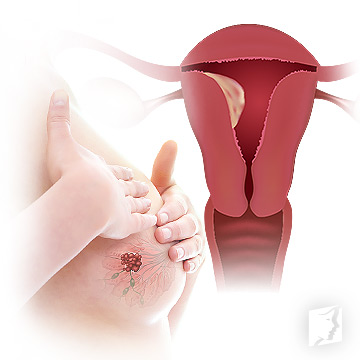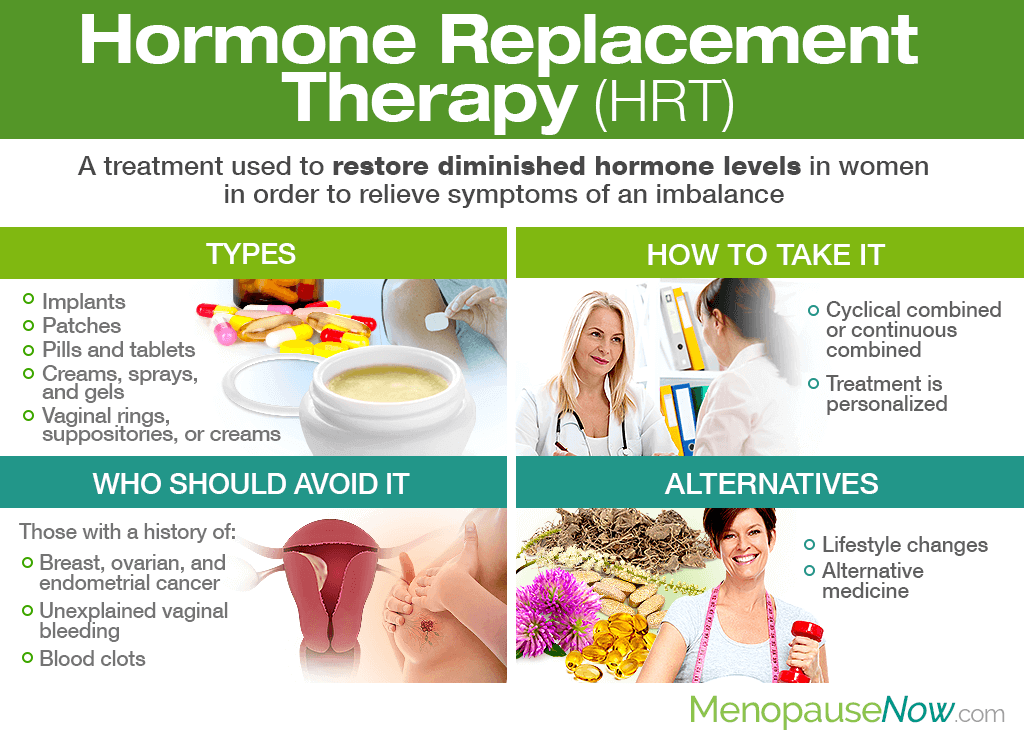Almost all menopausal women have heard about hormone replacement therapy (HRT) being the magic cure for their symptoms. Nevertheless, there is a plethora of information to be known before pursing treatment. Continue reading to learn all about HRT, including what it is, the various types available, how to take it, and more.
What is HRT?
HRT for perimenopause is a treatment used to replace hormones in women that the body is no longer producing due to ovarian reproductive abilities winding down mid-life.
By doing so, hormone replacement relieves symptoms of hormonal imbalance from perimenopause into postmenopause, such as hot flashes, mood swings, irritability, vaginal dryness, low libido, and more.
Hormone replacement therapy for women is also acclaimed for preventing bone loss and reducing fracture risk in postmenopausal women.
Types of HRT

There are a variety of types of HRT available, depending on needs and preferences. The most common include:
Implants, changed once every few months.
Patches, changed once or twice a week.
Pills and tablets, usually taken once a day.
Creams, sprays, and gels, generally applied daily.
Vaginal rings, suppositories, or creams, whose schedules vary.
Most often, the hormones prescribed are estrogen, progesterone, or a combination, depending on if a woman has undergone a hysterectomy. Very rarely is testosterone prescribed off-label for women.
How to Take HRT

Because treatment is personalized, there is no standardized regimen. Follow directions from your healthcare provider for the specific type of HRT as well as regimen pursued.
There are two treatment regimens pursued: cyclical combined or continuous combined. Women on cyclical combined take hormones at different times during the month, while women on continuous combined take two or more hormones simultaneously with no break.
It is recommended to begin treatment on the lowest dose possible for the shortest amount of time to control symptoms. It may take a few weeks to feel its initial effects.
While an initial check-up will be performed in three to six months, women who continue HRT use will undergo check-ups at least once a year to monitor treatment progress.
Who Should Avoid HRT

Estrogen replacement therapy should be avoided by women who have not had their uteruses removed in a hysterectomy. This is because estrogen stimulates the growth of the uterine lining, increasing the risk for cancer.
Moreover, women with a history of certain health conditions should also avoid hormone replacement. These include breast, ovarian, and endometrial cancer; unexplained vaginal bleeding; blood clots; liver disease; or strokes or heart attacks.
Keep in mind that taking hormone therapy may increase the risk of aforementioned health conditions - breast cancer, strokes, heart attacks, and blood clots - as well as gallbladder disease.
Speak with your doctor to discuss the risks and benefits of HRT depending on your specific medical history and symptoms experienced.
However, because studies have shown that hormone replacement for women can cause serious side effects, many women pursue alternative ways to treat the hormonal imbalance at fault for their pesky symptoms.
Alternatives to HRT

Lower-risk options for symptom relief generally start with lifestyle changes that promote optimal endocrine system health. These include an optimized diet, regular exercise, and wholesome habits, such as reduced caffeine and alcohol intake, sufficient sleep, and stress-relief techniques.
Likewise, women can tackle the hormonal imbalance directly with herbal medicines such as phytoestrogenic herbal supplements - which contain plant-based estrogens that act as natural hormones in the body - or hormone-regulating supplements, which stimulate the endocrine and pituitary glands to produce their own hormones.
Learn more about these and more natural and effective menopause symptoms treatments so that you can get back to feeling like yourself again without the use of pharmaceutical options.
Sources
- Mayo Clinic. (2018). Hormone therapy: Is it right for you? Retrieved March 26, 2019, from https://www.mayoclinic.org/diseases-conditions/menopause/in-depth/hormone-therapy/art-20046372
- MedlinePlus. (2017). Hormone Replacement Therapy. Retrieved March 26, 2019, from https://medlineplus.gov/hormonereplacementtherapy.html
- NHS. (2016). Overview: Hormone replacement therapy (HRT). Retrieved March 26, 2019, from https://www.nhs.uk/conditions/hormone-replacement-therapy-hrt/
- Society for Endocrinology. (2018). What is HRT? Retrieved March 26, 2019, from http://www.yourhormones.info/topical-issues/what-is-hrt/

